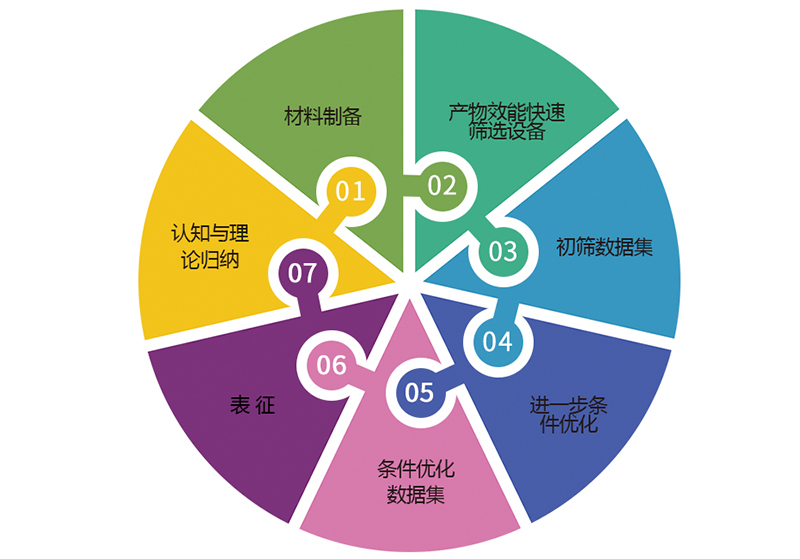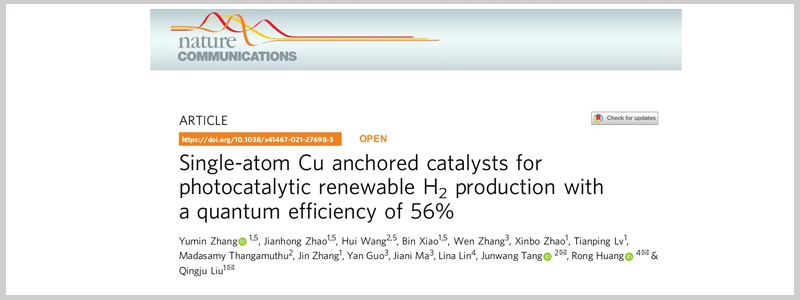Scientific research often exhibits this phenomenon: major discoveries generally have an element of serendipity. However, delving into the theoretical mechanisms, understanding their inevitability, and pursuing a rational breakthrough in new materials is what people strive for. In scientific practice, in the quantity-quality relationship, it often leads to contradictory, single-strategy process practices.
MCP-WS1000 doesn't support material trial and error without a clear strategy but advocates that: whatever is worth trying should be efficiently completed. So-called "materials that don't perform well should be known to have poor results in a short amount of time, and materials with potential should be made better in a short time." In fact, there are no "wrong" materials. Even these relatively poor or completely ineffective materials still provide researchers with richer and more detailed data and experience. The accumulation of new attempts and new data will bring about new insights. These data and conditions should be preserved and recorded. In our current scientific activities and data management conditions, who can be sure that an experiment done by a doctoral student three years ago won't be repeated by a new doctoral student tomorrow?
Using the example of solar hydrogen production from water splitting, we can fully utilize new tools, develop new research strategies (such as materials genomics strategies and methodologies), and change the time allocation of experimental researchers. Time, as an irreproducible resource, is not only driven by desire in terms of how it is allocated in work scenarios and various aspects but is also inevitably influenced by the tools provided by society. This includes devices such as the single-unit hydrogen production equipment imported from Japan and companies like Perfectlight. Essentially, they are devices based on the genius discovery research strategy, but today, they can be supported by new strategies.
MCP-WS1000 is essentially a more efficient data production tool based on physical hardware and the knowledge level of research personnel regarding materials, bridging the following strategy loop:

Mechanical automatic sampling/delivery to reduce human operation errors;
Comprehensive supporting equipment for a one-stop laboratory solution;
Comprehensive and rapid screening of experimental conditions to improve efficiency.
▲ Particularly suitable ● Relatively suitable ○ Can be used
▲ Photosynthesis ▲ Photocatalytic Water Splitting for Hydrogen/Oxygen ▲ Photocatalytic Complete Water Splitting ▲ Photocatalytic CO₂ Reduction
▲ Photodegradation of Liquid Pollutants (e.g., dyes, benzene, and benzene derivatives) ▲ Photocatalytic Quantum Efficiency Measurement
○ Photochromism ○ Photodegradation of Gaseous Pollutants (e.g., VOCs, nitrogen oxides, etc.)

Representative References

[1]Yumin Zhang, Jianhong Zhao, Hui Wang, Bin Xiao, Wen Zhang, Xinbo Zhao, Tianping Lv, Madasamy Thangamuthu, Jin Zhang, Yan Guo, Jiani Ma, Lina Lin, Junwang Tang, Rong Huang & Qingju Liu,Single-atom Cu anchored catalysts for photocatalytic renewable H2 production with a quantum efficiency of 56%,Nature Communications,58 (2022)
[2]Yuchao Yao , Qi Li , Xuhang Dai , Ping Dai , Dongyan Xu ,A novel hierarchical CdS-DETA@CoP composite as highly stable photocatalyst for efficient H2 evolution from water splitting under visible light irradiation,Applied Surface Science,588 (2022) 152890